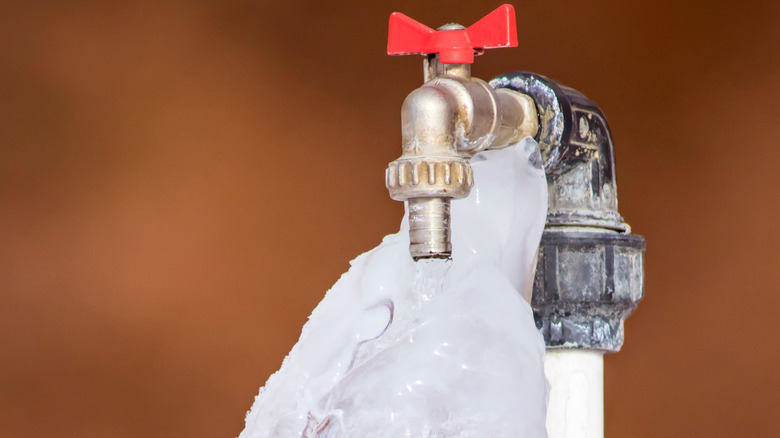Avoiding Frozen Pipes in Cold Weather: Essential Tips
Avoiding Frozen Pipes in Cold Weather: Essential Tips
Blog Article
In this article in the next paragraphs you'll find a lot of wonderful ideas involving Preventing and dealing with frozen pipes.

Cold weather can ruin your plumbing, especially by freezing pipelines. Right here's just how to prevent it from taking place and what to do if it does.
Intro
As temperatures drop, the threat of icy pipelines boosts, potentially leading to pricey repair work and water damages. Understanding exactly how to avoid icy pipes is critical for property owners in cool environments.
Recognizing Frozen Pipes
What triggers pipelines to ice up?
Pipelines ice up when exposed to temperatures listed below 32 ° F (0 ° C) for expanded periods. As water inside the pipes freezes, it expands, putting pressure on the pipeline walls and possibly causing them to rupture.
Dangers and damages
Frozen pipes can cause water system disruptions, building damages, and costly repair work. Ruptured pipelines can flood homes and cause substantial architectural damages.
Indications of Frozen Pipeline
Identifying icy pipes early can prevent them from rupturing.
Just how to determine icy pipes
Search for decreased water flow from taps, unusual odors or sounds from pipelines, and noticeable frost on revealed pipelines.
Avoidance Tips
Shielding at risk pipelines
Cover pipelines in insulation sleeves or utilize warm tape to safeguard them from freezing temperature levels. Concentrate on pipes in unheated or outside locations of the home.
Home heating strategies
Maintain indoor rooms appropriately heated up, particularly areas with plumbing. Open up cabinet doors to permit warm air to flow around pipes under sinks.
Safeguarding Outdoor Pipes
Garden tubes and outside faucets
Separate and drain yard pipes prior to wintertime. Mount frost-proof spigots or cover outside taps with shielded caps.
What to Do If Your Pipelines Freeze
Immediate activities to take
If you presume frozen pipes, keep faucets open up to ease stress as the ice melts. Utilize a hairdryer or towels soaked in hot water to thaw pipes gradually.
Long-Term Solutions
Structural changes
Take into consideration rerouting pipelines far from outside wall surfaces or unheated areas. Add added insulation to attic rooms, basements, and crawl spaces.
Upgrading insulation
Invest in high-quality insulation for pipelines, attics, and walls. Correct insulation assists keep constant temperatures and lowers the danger of icy pipes.
Verdict
Stopping frozen pipes calls for proactive actions and quick actions. By understanding the reasons, signs, and safety nets, home owners can safeguard their plumbing throughout winter.
5 Ways to Prevent Frozen Pipes
Drain Outdoor Faucets and Disconnect Hoses
First, close the shut-off valve that controls the flow of water in the pipe to your outdoor faucet. Then, head outside to disconnect and drain your hose and open the outdoor faucet to allow the water to completely drain out of the line. Turn off the faucet when done. Finally, head back to the shut-off valve and drain the remaining water inside the pipe into a bucket or container. Additionally, if you have a home irrigation system, you should consider hiring an expert to clear the system of water each year.
Insulate Pipes
One of the best and most cost-effective methods for preventing frozen water pipes is to wrap your pipes with insulation. This is especially important for areas in your home that aren’t exposed to heat, such as an attic. We suggest using foam sleeves, which can typically be found at your local hardware store.
Keep Heat Running at 65
Your pipes are located inside your walls, and the temperature there is much colder than the rest of the house. To prevent your pipes from freezing, The Insurance Information Institute suggests that you keep your home heated to at least 65 degrees, even when traveling. You may want to invest in smart devices that can keep an eye on the temperature in your home while you’re away.
Leave Water Dripping
Moving water — even a small trickle — can prevent ice from forming inside your pipes. When freezing temps are imminent, start a drip of water from all faucets that serve exposed pipes. Leaving a few faucets running will also help relieve pressure inside the pipes and help prevent a rupture if the water inside freezes.
Open Cupboard Doors
Warm your kitchen and bathroom pipes by opening cupboards and vanities. You should also leave your interior doors ajar to help warm air circulate evenly throughout your home.
:strip_icc()/snow-outdoor-faucet-pipes-4af65d1e5e904fb1aa7bf74071fe5d89.jpg)
Hopefully you liked our post about Helpful Tips to Prevent Frozen Pipes this Winter. Thanks for taking a few minutes to read through our posting. So long as you liked our blog entry please remember to pass it around. We truly appreciate reading our article about 6 Ways to Prevent Frozen Pipes.
Book An Appointment Report this page